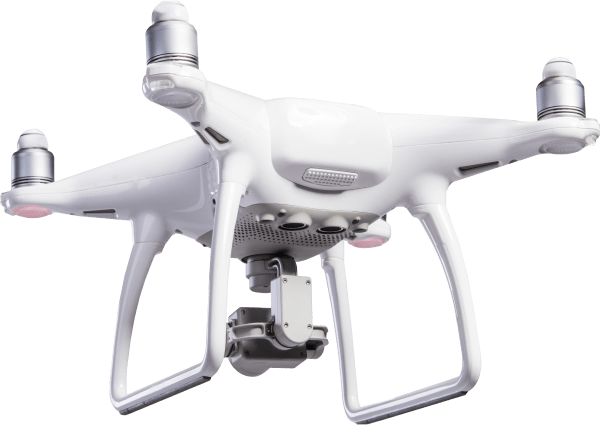Aerial photography has changed the way we capture moments, properties, events, and even cinematic stories. But no matter how advanced the drone or skilled the operator, weather conditions remain one factor that can’t be ignored.
Let’s explore how weather impacts aerial shoots and how you can prepare for unpredictable skies.
Why Weather Matters in Aerial Photography
Drones rely heavily on stable airspace and good visibility. Unlike ground photography, where you can adjust to minor weather shifts, aerial shoots are more sensitive. From wind gusts to cloud cover, small changes can affect flight safety, image quality, and even legal permissions.
Whether you’re planning a wedding shoot, mapping a property, or filming cinematic footage, checking the weather isn’t just a routine, it’s part of your pre-flight strategy.
Wind: The Invisible Challenge
Strong winds are one of the biggest threats to drone stability.
- Impact on footage: Wind can cause shaky or tilted shots, even with built-in stabilisation.
- Battery drain: Drones use more power to fight against wind, cutting flight time.
- Risk of crash: Sudden gusts can force the drone off course or cause it to land unexpectedly.
Tip: Avoid flying when wind speeds exceed 15-20 mph. Use weather apps designed for drone pilots to check wind conditions at different altitudes.
Rain: A No-Fly Zone for Most Drones
Rain is a serious concern. Most drones are not waterproof, and moisture can damage the motor, camera, and sensors.
- Safety risk: Wet surfaces affect rotors and can cause mid-air failure.
- Blurred visuals: Raindrops on the lens ruin footage quality.
If rain is likely, it’s best to postpone. For outdoor events, consider backup indoor shots or reschedule your aerial session.
For example, if you’re planning event coverage with drones, having a backup plan is part of delivering quality work. See how drone coverage adds value to events.
Fog and Low Visibility
Fog might create a moody atmosphere, but it severely reduces visibility. That’s a big deal for both legal and safety reasons.
- Flight restriction:Drones must maintain a line of sight.
- Navigation problems: Sensors and GPS signals may not function properly in dense fog.
Solution: Wait until fog lifts, or shoot during times when light haze gives ambience but doesn’t limit vision.
Sunlight and Shadows
Clear skies might seem perfect, but harsh sunlight can be a problem too.
- Overexposure: Midday light creates high contrast and sharp shadows.
- Lens flare: Shooting into the sun without the right angle or lens hood causes glare.
Early mornings or golden hour (shortly after sunrise or before sunset) offer softer lighting and beautiful aerial tones.
Planning property listings? Consider scheduling during these hours. It’s part of why aerial property photography is transforming UK real estate.
Snow and Cold Temperatures
Winter shoots come with their own set of weather concerns.
- Battery performance drops quickly in cold weather.
- Icing risk on propellers or motors during flight.
- White balance issues when snow reflects too much light.
Prepare by:
- Keeping batteries warm before takeoff
- Shortening flight times
- Adjusting camera settings for snowy landscapes
For winter venues or outdoor scenes, plan for multiple shorter flights rather than one long shoot.
Cloud Cover and Lighting Consistency
Not all clouds are a problem. In fact, light cloud cover often helps diffuse sunlight, reducing harsh shadows.
But rapidly shifting clouds can cause:
- Inconsistent lighting in timelapses
- Color grading difficulties during editing
Make sure your shoot plan includes buffer time to adjust for lighting changes. This is especially useful in cinematic aerial videography, where scene consistency matters most.
How to Prepare for Weather-Related Issues
Good preparation is the key to capturing great footage even when the sky is unpredictable.
Pre-Shoot Checklist:
- Check hourly forecasts (wind, rain, UV, visibility)
- Use a drone-specific weather app
- Scout the location in advance
- Keep extra batteries warm and ready
- Have alternate shooting days if possible
Gear That Helps:
- ND filters for bright conditions
- Waterproof drone covers (for light mist only)
- Landing pads to keep takeoff/landing safe in muddy or snowy areas
When to Reschedule
Sometimes, waiting is better than pushing through risky conditions. If safety, equipment, or image quality is likely to be compromised, don’t hesitate to reschedule.
Professionals often pair drone sessions with event planning tools, as shown in this visual guide to mapping events with drones.
Final Thoughts
Weather conditions are a key factor in aerial photography. From light winds to winter frost, every detail matters. By planning ahead and understanding what each condition means for your drone shoot, you can avoid disappointment, and keep your gear safe.
When working with professionals who specialise in drone photography UK, they’ll always factor weather into their shoot plan. Whether it’s for property, events, or film, it pays to trust those who understand both the skies and the shot.


